May 24, 2025 | 16:22 GMT +7
May 24, 2025 | 16:22 GMT +7
Hotline: 0913.378.918
May 24, 2025 | 16:22 GMT +7
Hotline: 0913.378.918
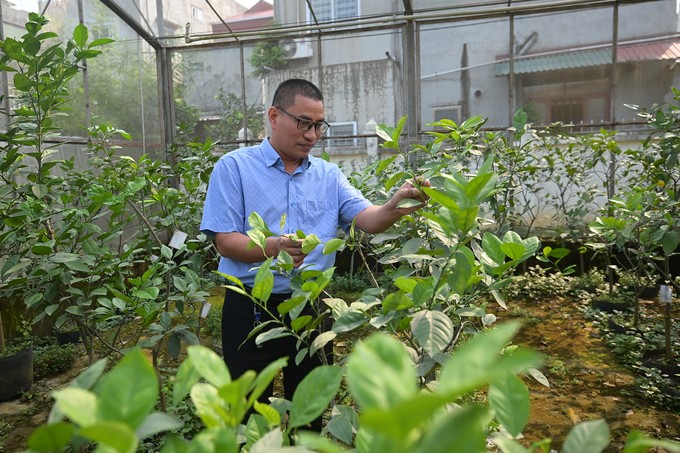
Mr. Cao Van Chi introduced the net house system of the Center for Citrus Research and Development. Photo: Tung Dinh.
According to Mr. Cao Van Chi, Deputy Director in charge of the Center for Citrus Research and Development (Fruit and Vegetable Research Institute), with the current scale of citrus fruit tree development, outdoor propagation is not enough to meet production needs and cannot create disease-free seedlings. Therefore, breeding and providing 3-level disease-free varieties from leading plants to S0, S1, and S2 to the market is the key to sustainable development.
Mr. Chi said that the selection of leading citrus trees and elite citrus orchards with high productivity and good quality to serve the work of breeding disease-free citrus fruit trees is increasingly of concern and increases every year but is still not enough to meet the current breeding work.

S1 seedlings are grown in the net house. S1 are trees that specialize in providing grafts to produce S2 seedlings. Photo: Tung Dinh.
In addition, many places and businesses have not yet thoroughly applied new scientific and technical advances in the production of citrus seeds by the shoot-tip micrografting method that creates disease-free trees for disease-free seedling production in the net house and limits Greening and Tristeza diseases. Along with that, buying and selling seedlings of unknown origin, floating on the market, has not been thoroughly handled.
To solve the above-mentioned limitations, Mr. Chi assumes that it is necessary to plan areas to produce disease-free tree varieties in areas that are currently growing and have plans to develop citrus fruit trees with suitable conditions of land, climate, water source, etc.
Besides, it is necessary to reorganize seed production facilities and improve professional capacity in producing disease-free citrus varieties for those participating in the seed production chain.
At the same time, create close linkages between producer households, groups of producer households, cooperatives, and businesses participating in seed production with the government, specialized agencies, research institutes, and scientists. Of which, clearly define the responsibilities of each party involved in the seed production process.

The leading citrus trees are kept in the net house of the Center for Citrus Research and Development. Photo: Tung Dinh.
According to Mr. Chi, it is also essential to apply new scientific and technical advances to seed production by the shoot-tip micrografting method to create disease-free plants to produce disease-free seedlings in net houses and limit Greening and Tristeza diseases on citrus trees.
To be more specific, the process of producing disease-free citrus seedlings is carried out in a 3-level net house system (net house storing mother trees S0, net house storing trees supplying grafts S1, and greenthouse for propagating disease-free plants S2).
Currently, the Center for Citrus Research and Development has nearly 1 hectare of net houses for seed production as well as storing genetic resources of leading trees of specialty citrus species in many regions of the country.
Of these, 1,600 m2 of net houses were newly built; half continue to be used for gene storage, and 800 m2 are used to produce disease-free seed S2. But according to Mr. Chi, this area is still too limited and cannot meet the Center's current demand for producing and consuming disease-free seedlings.
"Currently, the Center produces 50,000–100,000 seedlings/year, but only 1/3 of them are produced in the net house. The rest still have to be produced outdoors and face the risk of infection from bacteria, fungi, or nematodes," Mr. Chi said.

Mr. Cao Van Chi at the newly invested net house system with an area of 1,600 m2. Photo: Tung Dinh.
According to Mr. Chi, disease-free seedlings produced in nethouses are priced at about 30,000 VND/tree, which is 1.5–2 times higher than seedlings produced outdoors. However, the demand for disease-free seedlings among gardeners is still very large, especially gardeners replanting citrus trees, determined to invest methodically from the beginning to have high-quality products and sustainable development.
Therefore, the Center's biggest wish today is to receive more investment in resources to expand the area of standard net houses and increase the output of 3-level disease-free seedlings to supply to the market.
In addition to investing in infrastructure, Mr. Cao Van Chi also emphasized increasing the production of high-quality pomelo and orange varieties (early ripening, main crop, and late ripening varieties) to structure the crop spread of citrus varieties in concentrated production areas.
Translated by Thu Huyen
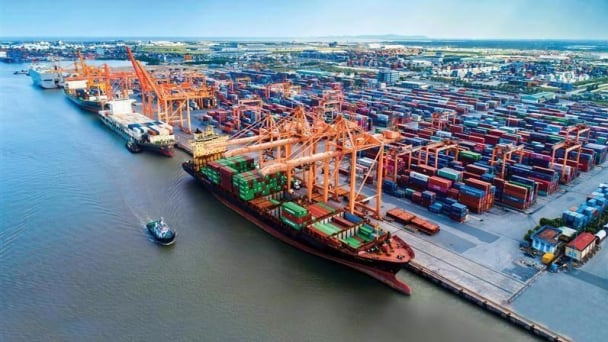
(VAN) South Korea is currently the second-largest investor in Hai Phong in terms of the number of projects (186 projects) and the largest in terms of total registered investment capital, reaching USD 14.2 billion.
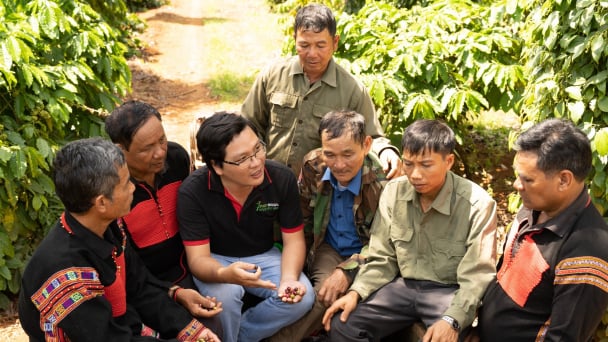
(VAN) As consumers become more environmentally conscious, legal regulations grow increasingly stringent...
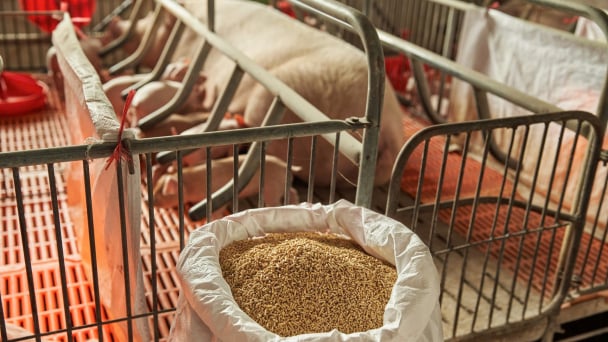
(VAN) CJ Feed&Care officially launched the FCR improvement campaign called “2025 Find Challenge Reach” in April 2025. In Vietnam, this campaign is implemented by CJ Vina Agri.
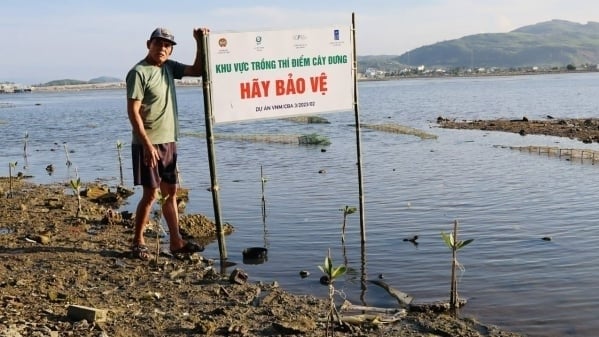
(VAN) The swamp in Pho Thanh is gradually being covered with red mangrove, creating a favorable environment for producing clean, high-quality salt.
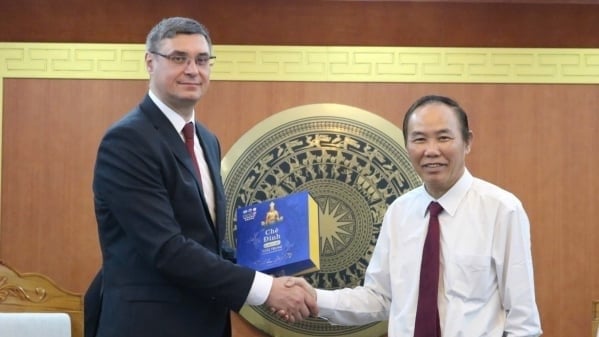
(VAN) The trade turnover of agro-forestry-fishery products is growing significantly, along with investment cooperation commitments that are opening up new development directions between Vietnam and Russia.
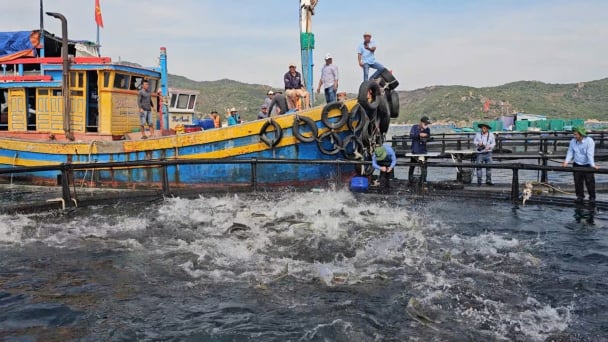
(VAN) Khanh Hoa is investing over 545 billion VND to develop 240 hectares of high-tech marine aquaculture in order to guarantee a consistent supply of seafood exports and achieve the USD 1 billion target.
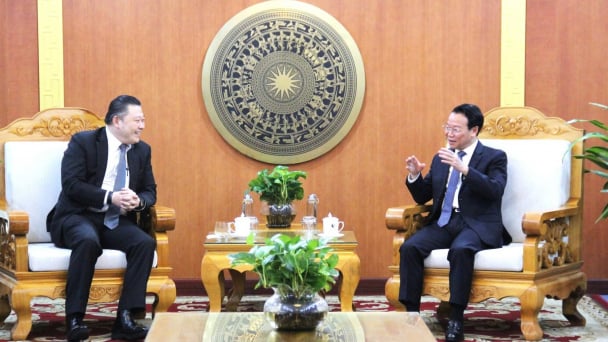
(VAN) Minister of Agriculture and Environment Do Duc Duy held a meeting with Soopakij Chearavanont, Chairman of C.P. Group, on May 15.